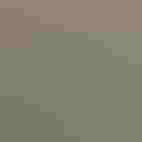Cackling Goose
At a Glance
The white-cheeked geese of North America were long considered to make up just one highly variable species, Canada Goose. It was not until 2004 that four of the smallest forms were formally recognized as comprising a distinct species. As their name suggests, Cackling Geese have much higher-pitched voices than the familiar honking of Canada Geese.
All bird guide text and rangemaps adapted from by Kenn Kaufman© 1996, used by permission of Houghton Mifflin Harcourt Publishing Company. All rights reserved.
Category
Duck-like Birds, Ducks and Geese
IUCN Status
Least Concern
Habitat
Fields, Meadows, and Grasslands, Freshwater Wetlands, Lakes, Ponds, and Rivers, Tundra and Boreal Habitats
Region
Alaska and The North, California, Eastern Canada, Mid Atlantic, New England, Northwest, Plains, Rocky Mountains, Southeast, Southwest, Texas, Western Canada
Behavior
Direct Flight, Formation, Swimming
Population
4.500.000
Range & Identification
Migration & Range Maps
All populations are strongly migratory. Those nesting in Alaska winter mostly in California, while those from the central Canadian Arctic winter mostly on the southern Great Plains and near the western Gulf Coast.
Description
21-30". Like a small version of Canada Goose, with a very short, stubby bill. The most distinctive types are very small, hardly bigger than Mallards.
Size
About the size of a Mallard or Herring Gull, About the size of a Heron
Color
Black, Brown, Gray, White
Wing Shape
Fingered, Long
Tail Shape
Rounded, Short, Square-tipped
Songs and Calls
Honking, high-pitched cackling. A higher “alto” honk to the Canada Goose “tenor.” Often a high pitched “cackling”, from which its common name is derived.
Call Pattern
Flat, Simple
Call Type
Croak/Quack, Raucous
Habitat
Tundra in summer; lakes, marshes, and fields in winter. Nests on tundra in western Alaska and north-central Canada, as well as barren uplands on Aleutian Islands. Winters on southern lakes and marshes, often foraging in open prairies or farm fields.
Sign up for łÔąĎşÚÁĎ's newsletter to learn more about birds like the Cackling Goose
Behavior
Eggs
4-6. White, soon becoming nest-stained. Incubation is by female, 25-27 days, with male standing guard nearby.
Young
Parents lead young from nest 1-2 days after hatching. Young are tended by both parents, but find their own food from the start. Age at first flight about 6-7 weeks.
Feeding Behavior
forages mostly by grazing while walking on land; also feeds in water, submerging head and neck, sometimes up-ending. Feeds in flocks at most seasons.
Diet
almost entirely plant material. Feeds on a wide variety of plants. Eats stems and shoots of grasses, sedges, aquatic plants; consumes many cultivated grains, mainly waste grains left in farm fields.
Nesting
May mate for life. Nest site (chosen by female) is usually near water, on open tundra or sometimes on cliff ledge. Nest (built by female) is a shallow scrape filled with plant material gathered from immediately around the nest, and lined with down feathers.
Conservation
Conservation Status
The distinctive subspecies on the Aleutian Islands of Alaska was almost exterminated by foxes introduced to those islands for the fur trade. After removal of foxes from some islands, the geese made a good comeback. Subsistence hunting may be a problem for some populations in western Alaska and elsewhere.
Climate Threats Facing the Cackling Goose
Choose a temperature scenario below to see which threats will affect this species as warming increases. The same climate change-driven threats that put birds at risk will affect other wildlife and people, too.







